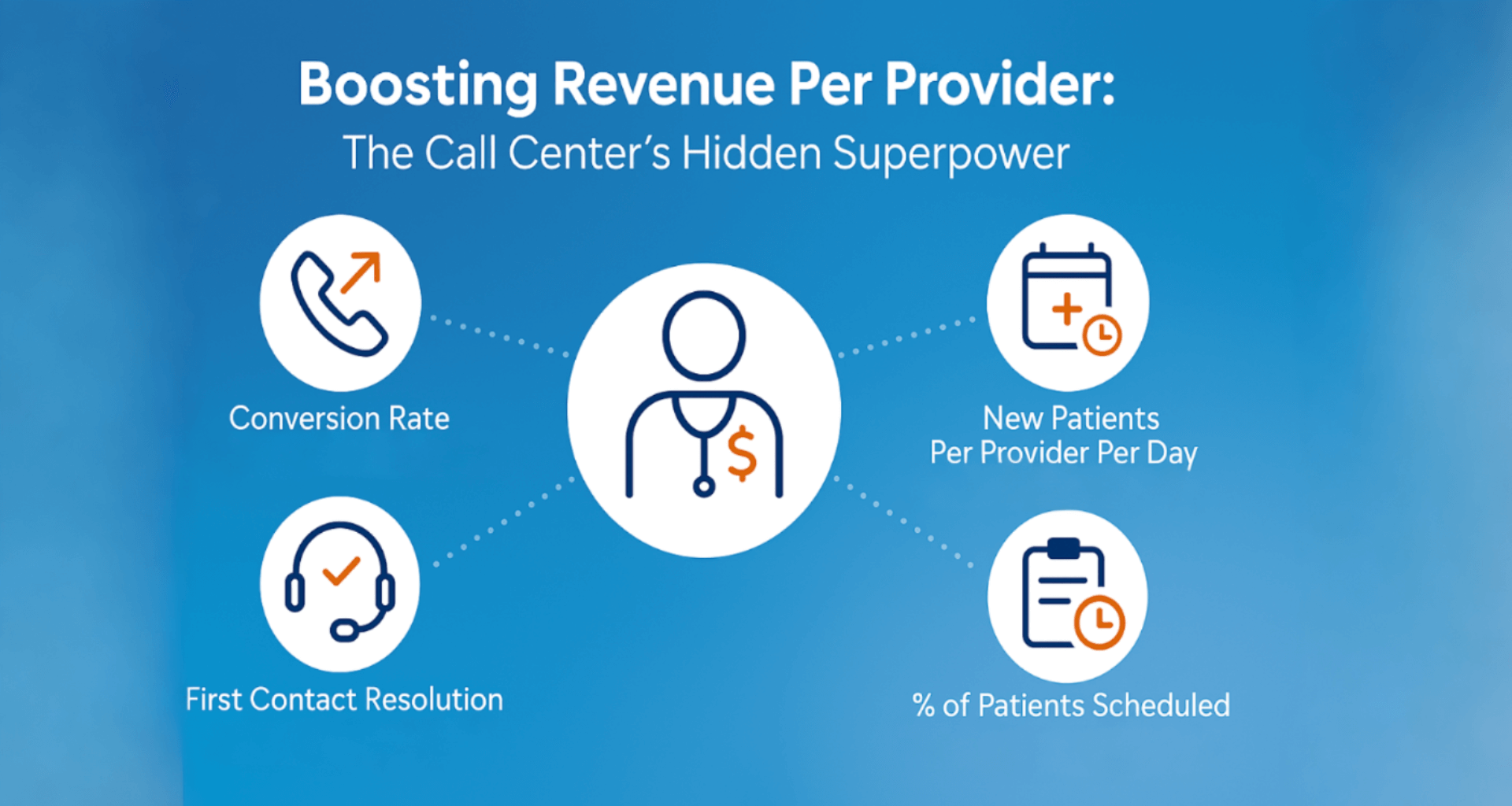
What is Patient 360?
In the healthcare industry, Patient 360 refers to a comprehensive database of patient information, all consolidated in a single, cloud-based healthcare CRM system.
Sophisticated healthcare CRM software enables a 360-degree view of patients—detailed data about both individual patients and patient groups—to be easily accessed by medical practices, doctors, hospitals, and healthcare professionals. Patient 360 improves patient access, strengthens patient engagement, boosts physician satisfaction, and enhances the efficiency of health systems.
Patient information contained in a Patient 360 system includes:
- Medical history and electronic health records.
- Service history, including every healthcare organization and medical practice where the patient has received care or consultation.
- Health insurance information.
- Patient preferences: pharmacy, appointment type, doctor's gender, appointment days/times.
- Specific needs and disabilities: wheelchair assistance, transportation support, reading assistance.
- First language and second language.
- The patient's address, location, and distance from specific health systems and hospitals.
- Demographics: race, biological sex, age, gender-identification, weight, height, native country, birthplace.
- Occupational and income information: job title, employment type, salary.
Combined, this patient information provides a 360-degree view of the patient. When consolidated in a healthcare CRM system, Patient 360 optimizes the delivery of health services.
When not consolidated in a healthcare CRM, this patient data is scattered across a slew of disparate systems and software. Finding and utilizing this information—in the moments that matter—is thus an arduous task that drains time, resources, and revenue from providers, practices, and health systems.
Sophisticated healthcare CRM software centralizes all patient information into a single, HIPAA compliant, cloud-based platform. All essential patient data can be accessed in real-time by medical professionals—in any corner of the healthcare industry—at any time.
The result: turbo-charged productivity for healthcare organizations, better medical care, and happier patients and providers. A Patient 360 system—optimized in a healthcare CRM—is a key feature of cutting-edge patient access and patient communication solutions.
What is Provider 360?
Provider 360 and Patient 360 are two sides of the same coin. Provider 360 is a detailed database about healthcare providers—all consolidated in a single, cloud-based healthcare CRM system.
This holistic provider data offers a deeply-detailed, 360-degree view of doctors, medical practices, and healthcare organizations. This information—drawn from multiple sources and built into the medical CRM software—allows providers to better manage their services, optimize their marketing to prospective patients, ensure regulatory compliance, and deliver optimal patient care.
Information contained in a Provider 360 solution includes:
- Patient type preferences: medical history, medications, pre-existing conditions, disabilities, unique health needs.
- Preferred patient demographics.
- Scheduling preferences: days of week/time of day, online booking, appointment length.
- Preferred location of medical care.
- In-person or virtual appointment preferences.
- Preferred health insurance vendors.
- Type of service: primary care appointment, speciality appointment, surgery.
- Surgery history and surgery preferences.
- Accepting/not accepting new patients.
- Visit reason preferences.
- Patient reviews.
Benefits of Patient 360 for healthcare organizations
Personalized engagement and patient satisfaction: A Patient 360 system, optimized in a healthcare CRM, allows providers to conduct customized marketing campaigns aimed at specific patient profiles: health history, demographics, scheduling preferences, and more. Care plans and health services can be made context-aware and tailored to each individual patient.
Fully-mapped patient journey: From discovery, through selection, conversion, service, and loyalty. Detailed data analytics empower healthcare providers to measure the effectiveness, at every stage, of their patient access and patient engagement platform. They can then, with the help of healthcare CRM software, make the adjustments needed to supercharge patient acquisition and patient retention.
HIPAA compliance: Consolidating patient data in a single, AI-based healthcare CRM improves patient safety and patient privacy—and ensures regulatory compliance. Healthcare staff need not worry about maintaining HIPAA compliance, because the CRM software has built-in HIPAA protocols.
Transformation of healthcare contact centers: The ability to access holistic patient data, in real-time, is a game-changer for call centers. When a patient calls a contact center, the staff, thanks to Patient 360, can instantly access deeply-detailed data about that patient. Patient records, medications, specific patient needs, service history, and more are literally at the staff's fingertips—empowering them to provide the fastest, safest, and best possible patient care—without the need to navigate different apps, tools, and databases.
Scale quality experiences: A Patient 360 solution, consolidated in a HIPAA compliant medical CRM, allows healthcare vendors to manage and expand their brand. Their staff can offer superior patient experiences during each and every encounter, boosting the organization's reputation and reach. Exceptional customer relationship management is a defining feature of sophisticated Patient 360 solutions.
Community engagement (government & payors): Patient 360 software empowers each and every patient to engage with the healthcare industry and community. Healthcare CRM systems send patients preventive care information, appointment reminders, and other tools customized to the patient's health history and demographics: age, past procedures, medications, gender, smoking history, disabilities, etc.
Benefits of Provider 360 for healthcare organizations
Optimized patient journey: For healthcare staff, real-time access to detailed provider info, at every step of the patient journey, means highly personalized care, from the first phone call to follow-up treatment. Patients are matched with the perfect doctor for both the patient's needs and the doctor's preferences.
Discovery in search engine results: A Provider 360 system—optimized in a healthcare CRM—dramatically improves the provider's SEO prowess. They rank much higher and get much more exposure in search engine results, because their data is mapped into Google and other search solutions. The marketing automation tools offered by healthcare CRM software greatly expand the provider's online presence.
Improved conversion: With a healthcare CRM, providers can get 20-40% of all scheduling and referrals online—and 90%+ of all appointment types, including surgery and radiology—available for patients to self-schedule.
Tailored service: A Provider 360 system gives doctors control over their service preferences. The healthcare CRM encodes a tremendous amount of physician preferences: the patient’s disposition, demographics, insurance, age, geo-location, prior visits, and more.
Sophisticated healthcare CRM software can also automate complex appointments, including sequential, speciality, and surgeries. The software customizes appointments to specific time frames based on the doctor's preferences.
Equitable distribution of appointments: When Provider 360 is optimized in a healthcare CRM solution, organizations can automate the provider scheduling cycle to ensure an equitable distribution of appointments. This avoids even the appearance of favoritism or politics.
Provider communication preferences: When does the provider want to be consulted? When do they want their care team to handle it, and when do they not want their team to be bothered? Is all communication channeled through the EHR, or will they review service issues sent through secure SMS? If the provider is out, who is the backup physician?
With a healthcare CRM, providers can document all of the above and, even better, automate proper communication channels and decision support.
Benefits of uniting Patient 360 & Provider 360 in healthcare CRM software
Patient 360 and Provider 360, by themselves, are very valuable. But when combined in a healthcare CRM system, the benefits are extraordinary:
Patient acquisition: Patient-Provider 360 is the next-generation of customer relationship management and patient access. Meeting patients every step of the way along their patient journey grows practices by at least 10% per year.
Flawless patient-provider matching: AI-powered healthcare CRM software is a better scheduler than human staff. AI always matches patients with the right doctors—and it never makes mistakes.
Scheduling accuracy: AI-guided scheduling means less scheduling errors—which means happy providers and safe patients.
Reduced operations cost: A Patient-Provider 360 system allows providers to offload a third of appointment calls to self-service—and to reduce agent training time by 70%. Appointments that call staff do handle are also faster and more accurate.
Powerful healthcare marketing campaigns: A Patient-Provider 360 solution optimizes healthcare marketing campaigns. Consolidating detailed Patient-Provider information in a healthcare CRM allows organizations to send personalized reschedule links for all appointments without overwhelming their contact center. They can gently nudge patients to, with a click of a button, schedule their post-op appointments and other services.
Automated waitlisting and rescheduling: A Patient-Provider 360 solution automatically waitlists, reschedules, and handles complicated visits: radiology, labs, procedures, and more.
Track digital marketing: Organizations can measure the downstream revenue of their patients by channels: where they first found practice, where they scheduled their first appointment, where they booked follow-up care, etc.
Business intelligence (BI): A Patient-Provider 360 solution, united in a healthcare CRM, centralizes service data for insight. Organizations can use this detailed information to refine their customer relationship management, improve patient engagement, and increase patient satisfaction.
What happens to a health system when patient access goes wrong?
For hospitals and health systems, perfecting their patient access platform needs to be a top priority. When patient access goes wrong, it not only hurts healthcare businesses—it can also cripple care quality and lead to poor patient outcomes.
Which is why it is critical for providers to build sophisticated, holistic, and powerful Patient-Provider 360 solutions. A Patient-Provider 360 platform, optimized in a healthcare CRM, is the future of digital health.
To learn more about the importance of telehealth software, check out our blog: "Why Healthcare CRM Software Is A Crucial Telemedicine Tool."
Posted By

Stephen Dean is COO of Keona Health, where he’s spent 13 years building AI systems that transform patient access. Before “agentic AI” was a term, his team was deploying autonomous systems that now handle millions of patient conversations annually.
Related Post
July 30, 2025
when patients call, they’re not just dialing a number—they’re reaching for help. and...
April 10, 2025
in healthcare, every interaction is a decision point—one that can impact outcomes,...


